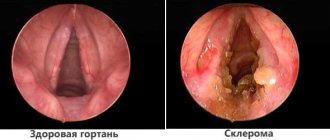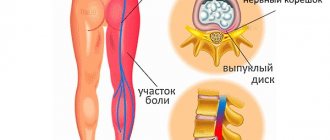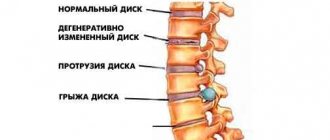The causes of a lump in the throat can be different - diseases of the nasopharynx, spine, thyroid gland, often a feeling of fullness occurs against the background of psychogenic factors. A comprehensive examination will help to establish an accurate diagnosis; discomfort can be eliminated with the help of medications and traditional medicine.
A feeling of a lump in the throat indicates abnormalities in the body
Causes of a lump in the throat
A lump in the throat is not an independent disease; such a symptom signals the presence of problems in the body. The causes of discomfort are varied, but the main signs of pathology are largely similar and can be periodic or permanent.
When a lump appears in the throat, patients complain of difficulty swallowing, soreness, burning, a feeling of movement in the throat, and it is painful for the person to breathe. Additionally, other symptoms may appear - dyspeptic disorders in the form of diarrhea, nausea, pain and heaviness in the muscles, back, and limbs. The pathology is often accompanied by fever, fatigue, migraines and attacks of dizziness.
What causes a lump in the throat:
- overweight;
- injuries and falls that caused displacement of the cervical vertebrae;
- presence of a foreign body in the throat;
- passion for junk food, which provokes the development of diseases of the digestive tract;
- long-term use of medications for allergies, hypertension, antidepressants;
- hernia of the esophagus and diaphragm;
- after a cold, a lump may be the result of a strong hacking cough;
- After eating spicy food, alcoholic drinks, and heavy smokers, a lump of mucus may appear in the morning.
From a psychosomatic point of view, a lump in the throat appears in people with low self-esteem, who often have to obey, restrain themselves, and swallow resentment.
What diseases cause a feeling of a lump in the throat?
Malfunctions in the functioning of internal organs and systems can provoke the appearance of unpleasant sensations when swallowing; the concept of a nervous lump is separately distinguished; depression, neurosis, insomnia and overwork can provoke its occurrence.
Why does a lump appear in the throat:
- Inflammatory processes of various types in the nasopharynx - tonsillitis, laryngitis, pharyngitis, sinusitis. Diseases develop quickly, which can provoke swelling of the larynx and an attack of suffocation. Pathologies are accompanied by bad breath, headache, redness of the throat, purulent plaque on the tonsils, and copious discharge of mucus from the nose.
- Benign and malignant tumors in the larynx, trachea, nasopharynx. As they grow, they compress the larynx, and the person constantly feels a lump in the throat.
- Malfunctions of the thyroid gland - iodine deficiency, excessive synthesis of hormones, inflammation of the thyroid gland.
- A lump in the throat often appears with cervical osteochondrosis - the disease is accompanied by headache, stiffness of movement, and discomfort in the back.
- Reflux disease, other pathologies of the digestive tract - a lump and discomfort in the throat begins to bother you after or during eating, heartburn, pain in the epigastric area, and sour belching appear. Unpleasant sensations may occur after swallowing the probe.
- Cardiospasm is a sharp contraction of the muscles that are located between the stomach and esophagus. A sudden attack is accompanied by discomfort in the upper chest, which is similar to heart pain.
- Immune pathologies - multiple sclerosis, Sjögren's syndrome.
Cardiospasm can cause a lump in the throat
A lump in the throat can be a consequence of a stroke, helminthiasis, if the parasite lays eggs in the esophagus, scleroderma, myasthenia gravis.
At times, the throat compresses due to nervousness - during stress, the throat muscles sharply contract and tense, which causes a spasm, making it difficult for a person to swallow, breathe, speak, this phenomenon is called a hysterical lump. Psychogenic factors include vegetative-vascular dystonia, in which there is numbness of the tongue, dry mucous membranes, all of which can cause a lump to appear in the throat.
A lump in combination with belching is a common occurrence in pregnant women, which occurs against the background of relaxation of the muscles located between the stomach and esophagus.
Psychological disorders
In most cases, this problem arises for psychological reasons. Sometimes the absence of somatic factors can be determined by palpation. A lump that has arisen against the background of a stressful situation cannot be felt. A person only feels it, but cannot find it. Before the doctor decides that the problems are related to the state of the nervous system, he will conduct an examination of the body to ensure that there are no physical causes.
In such situations, the patient finds it difficult to swallow. He feels scratching, soreness and constriction in his throat. He has difficulty breathing and eating solid foods. At first these manifestations are barely noticeable, but gradually become stronger. Against the backdrop of the development of symptoms, the patient involuntarily thinks about the most terrible diagnoses, such as oncological processes. As a result, horror and bad mood further aggravates the situation.
Note. Symptoms usually disappear after the patient breaks the vicious circle of worries and calms down.
Sometimes this symptom appears suddenly. Because of this, a person panics, his heart begins to beat faster, and his blood pressure rises. Against the backdrop of fear from a lump in the throat, some develop depression, which is accompanied by tearfulness, isolation, depression and a pessimistic attitude. Most often, the causes of a psychological coma are associated with a traumatic situation and the influence of other psycho-emotional factors.
Disruption of the innervation of the pharynx, which leads to the feeling of a lump in the throat, occurs under the influence of stress, hysteria, panic attacks, which increase the load on the central nervous system
Which doctor should I contact?
If unpleasant symptoms appear, especially if discomfort in the throat is regular and does not go away for a long time, it is necessary to visit a therapist; based on an examination, anamnesis and the results of preliminary diagnostics, the doctor will give referrals to other specialists.
Consultation with an ENT specialist, endocrinologist, gastroenterologist, surgeon or vertebrologist, neurologist and rheumatologist may be required. If pathologists cannot identify somatic causes, the patient is referred to a psychotherapist.
Diagnostics
To determine the causes of the lump, after examination, questioning and history taking, the doctor conducts an examination, which includes laboratory and instrumental research methods.
Basic diagnostic methods:
- clinical blood and urine analysis;
- throat swab;
- oropharyngoscopy – a specialist carefully examines the tonsils, oral cavity, and root of the tongue;
- laryngoscopy;
- CT, MRI of the cervical vertebrae, brain;
- Ultrasound of the thyroid gland, determination of gland hormones in the body;
- fibrogastroscopy.
Important!
You should immediately consult a doctor if the feeling of a coma is accompanied by difficulty breathing, swelling of the neck, sore throat, slurred speech, when coughing up there are impurities of pus and blood in the sputum, temperature readings are more than 37.5 degrees.
Ultrasound of the thyroid gland is used to identify the causes of a lump in the throat.
Treating a lump in the throat at home
To get rid of a lump in the throat, you need to eliminate the cause of the pathology; for this, various medications are used. Diet, physical therapy, and traditional methods will help enhance the effect of drug therapy.
Medicines
Drug treatment is aimed at eliminating the inflammatory process, pain syndrome, spasm, the therapy is quite specific, and is always selected individually, depending on the diagnostic results and the presence of concomitant diseases.
Main groups of medicines:
- anti-inflammatory drugs - Nise, Diclofenac, help cope with back pain;
- antipyretics – Ibuprofen, Nurofen, Paracetamol;
- antispasmodics – No-shpa, Drotaverine;
- tablets to replenish iodine deficiency - Yodomarin, Iodbalance;
- sedatives – tincture of motherwort, valerian, Nervo-Vit, Apitonus-P;
- antibiotics – Amoxiclav, Amoxicillin, prescribed for bacterial infections of the nasopharynx;
- antiviral drugs - Remantadine, Tamiflu;
- antihistamines - Tavegil, Suprastin, eliminate swelling and other manifestations of allergies;
- medications to eliminate belching, heartburn, improve digestion - Rennie, Almagel;
- pain-relieving ointments – Chondrogard, Dolobene;
- nasal drops – Vibrocil, Naphthyzin, Grippferon.
Diclofenac helps cope with pain
Surgical methods are used in the treatment of tumors, some diseases of the thyroid gland, and hernias. If the neoplasm is malignant in origin, it is necessary to undergo a course of chemotherapy.
How to get rid of it using folk remedies
If the discomfort in the throat is short-term and caused by non-serious diseases, alternative medicine will help relieve the discomfort.
Simple remedies to get rid of a lump in the throat:
- For infectious lesions of the nasopharynx, it is necessary to mix 5 g of chamomile and calendula inflorescences, brew the mixture with 250 ml of boiling water, and leave in a sealed container for an hour. Strain the infusion, dilute with an equal amount of warm water, gargle every 3-4 hours.
- Inhalation will help get rid of severe pain - dissolve 20 drops of menthol or eucalyptus oil in 500 ml of water. Inhale the steam through your mouth for 7–10 minutes.
- Mix 120 ml of vodka, 100 ml of honey and 50 ml of aloe juice, put the mixture in a dark room for 4 days. Strain and use for compresses for cervical osteochondrosis.
- If you have iodine deficiency, you need to pour 3 ripe figs with 200 ml of water at night, drink the entire drink in the morning, eat 1 fruit, and the rest before lunch and dinner. The course will require 4 kg of figs.
During treatment, it is necessary to avoid spicy, sour foods, all dishes should have a comfortable temperature and soft consistency, alcohol and smoking should be completely avoided.
Gargle with a decoction of chamomile and calendula
Modern methods of treatment
For unpleasant sensations in the throat against the background of an acute infectious disease, antiviral (Groprinosin, Arbidol) or antibacterial drugs (penicillins, macrolides, cephalosporins) are prescribed.[ads-pc-1][ads-mob-1]
1
Tablets, lozenges (Lizak, Septefril, Decatylene), mouth rinses with antiseptic solutions (Tantum-Verde, Gevalex, Chlorophyllipt, Furacilin) relieve pain well.
2
The allergic reaction is eliminated by regular use of antihistamines (Loratadine, Suprastin, Centrin) or short-term hormonal therapy (Dexamethasone, Prednisolone intramuscularly). When the larynx is narrowed, inhalation with a decongestant mixture, Pulmicort, helps.
3
Symptoms of vegetative-vascular dystonia are removed with sedatives (Glycine, Tenoten, valerian extract), physiotherapy, and nootropic drugs. For GERD, mild sedatives, antisecretory medications (Omeprazole, Rabeprazole, Famotidine), antacids (Almagel) and prokinetics (Domperidone, Cerucal) are also used.
4
To eliminate unpleasant symptoms of thyroid diseases, iodine (in case of deficiency) and selenium preparations are prescribed. In more severe cases, they resort to non-steroidal anti-inflammatory drugs, hormones, and cytostatics. To maintain normal functional ability of the gland, hormone replacement therapy (L-thyroxine) is prescribed.
5
Tumors are often treated with surgery, targeted radiation therapy, or courses of chemotherapy drugs. In the last stages, only palliative care is indicated.











